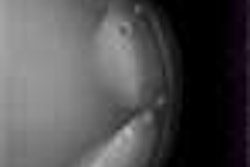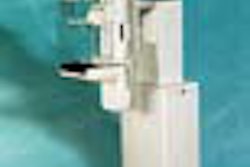Aiming to reduce the number of false positive breast biopsies, German mammographers looked for a link between the positive predictive value of MRI characteristics and BI-RADS categories.
"Breast MRI has high sensitivity and negative predictive value, but moderate specificity and positive predictive value (PPV). This results in a considerable number of false positive biopsies," said Dr. Katya Siegmann in a presentation at the 2000 RSNA conference in Chicago.
Focusing exclusively on lesions detected with MRI, Siegmann and her co-authors from the University Hospital in Tuebingen studied 62 patients with 70 detected lesions. The lesions were histologically proven by excisional biopsy after MR-guided marking or MR-guided microbiopsy.
The lesions were marked with an MR-compatible metal coil or a hook wire.
Images from diagnostic dynamic contrast-enhanced MRI (0.16 mmol Gadolinium-DTPA/kg, double breast coil, T1-weighted FLASH, 3-D) that had been obtained before the intervention were available in 51 cases.
The lesions were then analyzed for size, shape, margin, and pattern of contrast enhancement. The BI-RADS categories were defined depending on the degree of suspicion.
According to the results, the PPV of exclusively MR-detected lesions increased with the increasing BI-RADS categories: category 3, 0% PPV, 0/4; category 4, 23.7% PPV, 14/59; category 5, 85.7% PPV, 6/7.
Nearly 30% of the lesions detected were malignant, with invasive ductal carcinoma found more frequently than invasive lobular malignancies, Siegmann reported. At 82%, the majority of benign lesions showed proliferative or inflammatory changes. Size-dependent PPV was 21.4% for small lesions and 31.3% for larger lesions.
"Depending on the lesion size, the PPV of malignancy showed no significant difference between smaller lesions -- equal or smaller than 10 mm in diameter -- and larger lesions," Siegmann said.
The study also found that well-defined margins (48%) were more often associated with malignancy than ill-defined margins (26.9%). PPV of round/oval margins was 31.3%, while the PPV of irregular-shaped lesions was 40%. More than half, 53.8%, of the late inhomogeneous enhancing lesions were malignant, Siegmann said. Finally, early homogeneous-enhancing lesions were frequently more malignant (42.9%) than early inhomogeneous enhancing lesions (35.1%).
The group concluded that the pattern of late contrast enhancement and classification into BIRADS is useful for increasing positive biopsy rate of MR-detected lesions. However, the pattern of contrast enhancement, lesion shape and size did not play a significant role in the biopsy decision making process.
The psychological effect of false-positive screening results and the subsequent diagnostic workup on patients was the subject of a survey conducted by a multi-disciplinary team from the University of California, Davis. Researchers from the department of radiology and the department of human and community development questioned 121 women who had either undergone an immediate workup and received reports of a false-positive screening mammogram, or who had returned at a later date for a workup and reporting.
"Findings of this retrospective study suggest that the stress experienced by women with false-positive screening mammograms can be significantly reduced by providing immediate on-site diagnostic imaging followed by communication of the results by the radiologist," wrote Dr. Karen Lindfors and her colleagues (Radiology, January 2001, Vol.218:1, pp.247-253).
In addition, some respondents who had undergone immediate diagnostic imaging did not express concern about the false-positive mammogram because of the single visit to the radiologist, Lindfors wrote.
By Shalmali PalAuntMinnie.com staff writer
April 4, 2001
Related Reading
Multidisciplinary approach to breast screening can reduce patient stress, March 3, 2001
Unneeded breast surgeon referrals caused by clinician ignorance of BI-RADS terms, May 12, 2000
Click here to post your comments about this story. Please include the headline of the article in your message.
Copyright © 2001 AuntMinnie.com



















